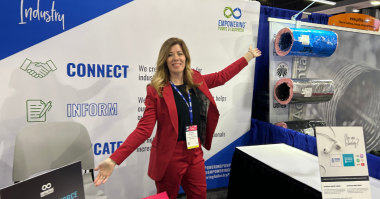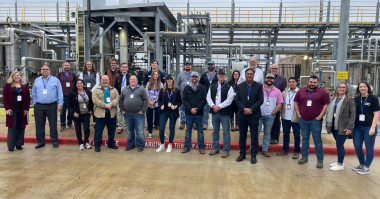As we get ready to celebrate the arrival of a New Year, let’s review the most popular articles among Empowering Pumps’ readers and newsletter subscribers. We hope you enjoy our TOP 10 articles of 2017! Don’t be afraid to use the comments section to request pump topics you’d like to see covered in 2018.
Net Positive Suction Head (NPSH) Margin – How Much?
How do we define ‘NPSH Margin’? What are the factors that can affect NPSH Margin? What level of NPSH margin should be specified? Is there a benefit to specifying a greater NPSH Margin? Does the appropriate NPSH Margin eliminate cavitation? This article answers these common questions about net positive suction head.
Maximizing Pump Efficiency through Reduced Corrosion and Erosion
Continued research into the processes that degrade pump performance is being matched by the development of better application techniques for protective coatings. By gaining a better understanding of both the pumping process and the factors that affect it, end users can make significant improvements in their maintenance strategies.
The 5 P’s of Root Cause Analysis
In an effort to “get going again”, many firms overlook the long-term negatives of not taking the time and energy to get to the root cause of a failure to prevent a future failure from occurring. Do you simply fix the “broken part” or do you find the root cause of the problem and avoid future failure repeats?
Four Useful Centrifugal Pump Calculators
Use these free online calculators to determine Brake Horsepower, Pump Efficiency with Electric Motor Driver, Specific Speed, and Suction Specific Speed.
Why Should We Look at the Operating Performance of Pumps?
Have we reached the limit of pump system performance once variable frequency drives (VFDs) and premium efficient motors have been installed? No! The opportunities for energy reduction and cost savings go well beyond the motor and drive. We must look more closely at the pump itself. Consistent pump performance testing enables owners and end users to compare data to original pump performance, helping them evaluate efficiency options and quantify cost savings opportunities.
Understanding Pump Station Designs to Address Wastewater Issues
Operating a wastewater facility is no easy task in today’s world. There are many challenges, including changes in sewage composition and water consumption, and aging infrastructure. Part of addressing wastewater challenges is to understand wastewater pump station design, types of stations, pump sump and intake design, piping, flow velocity, operating concepts, and other aspects.
Pump Person of the Week
With so many talented and interesting people working in the Pump Industry, Empowering Pumps tries to shine a light on various individuals working with pump systems around the world. Follow us on Instagram to keep up with featured Pump People of the Week OR email us to nominate someone you know!
Differences Between Centrifugal Pumps vs Positive Displacement
Across the industry, professionals are constantly working to develop and implement the latest in pump and valve technology. Recently, EmpoweringPumps.com has been taking on the topics of sustainability and new advancements. But for those who need a brush up on pump basics, we thought it would be a good time to discuss the differences between centrifugal and positive displacement pumps.
Preventing Water Hammer from Damaging Pumps & Pipes
Water hammer occurs when the flowrate of fluid in the pipe changes rapidly. It is also known as “surge flow”. It can cause very high pressures in pipes, very high forces on pipe supports, and even sudden reversals of flow. It can cause burst pipes, damaged supports and pipe racks, and leakage at joints.
Screw Pump Basics
A screw pump is a type of positive displacement pump that uses two or more screws that inter-mesh to pressurize fluids and move them in a system. The screws take in fluid then push it out from the other side while increasing its pressure.






Comments